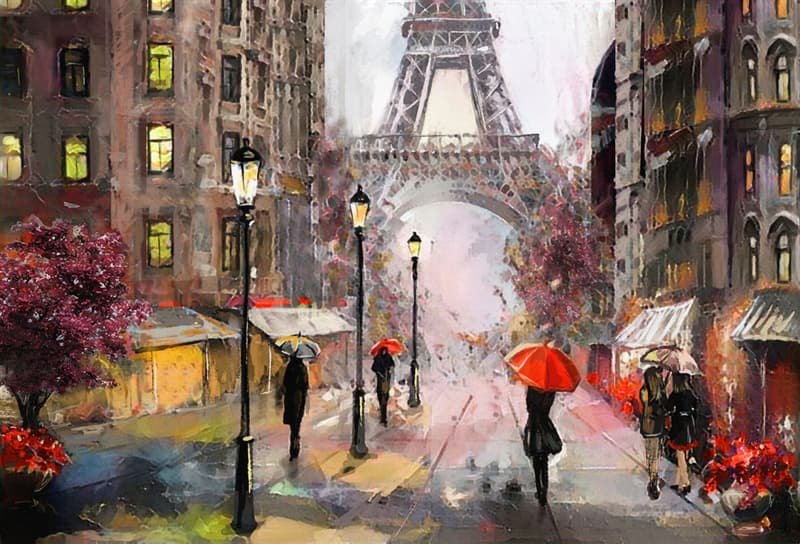What is the most misunderstood artwork?

Vincent van Gogh’s Sterrenennacht/Starry Night is popularly misunderstood:

Contrary to popular myth:
Van Gogh was not painting what he saw from the window of an asylum. He was painting from memory and imagination. The Dutch village is typically Dutch, and the cypress is something van Gogh had painted before.
Van Gogh was not hallucinating. We all know stars don’t look like that. Van Gogh knew how to paint realistically. He just chose not to. It has nothing to do with his perception.
Another one is the masterpiece by the Medieval Netherlandish painter, Jan van Eyck
This is typically assumed to be the marriage of a merchant named Giovanni Arnolfini and his wife Jeanne Cemani. Or so everyone thought. Then it was discovered that this marriage happened six years after Jan van Eyck died.
So, there are two possibilities:
- Giovanni Arnolfini had a cousin whose name happened to be Giovanni. Perhaps this isn’t the merchant Arnolfini. Perhaps this is the cousin’s marriage.
- Perhaps this isn’t a marriage. Perhaps Arnolfini had a previous wife, who since died, and probably in childbirth.
The painting gives reasons to consider the second:
- Despite it being daylight a candle is burning over the man’s head. A gutted candle appears above the woman’s head. That’s one way to represent living versus dead.
- There is a mirror on the wall behind them. The mirror includes scenes from the life and death of Christ. The life scenes are behind the man; the death scenes are behind the woman.
- If you look closely at the reflection, you see the woman is facing a nun. Possibly this is a midwife.
- The woman is standing by a bed. This may not be coincidental. This may refer to the bed where women gave birth.
And while this last is hard to determine, the woman appears pregnant.
Given all these details, taken together, I take it that the woman is actually an unnamed first wife who died in childbirth. This was the most common way women died in Medieval Europe.
In any case, this cannot be the wedding of Giovanni Arnolfini to Jeanne Cemani.
Arnolfini Portrait - Wikipedia
And the handwriting on the wall is more ambiguous than it appears. It says, in Latin, “Jan van Eyck” was here. This does mean van Eyck was claiming authorship of the painting. It may or may not mean that van Eyck was a witness to a formal ceremony.
People have often assumed this was the case. It may or may not be. We do not know whether van Eyck painted this from sight or from a description.
Now we are waiting for your response! What is your opinion? Is there anything you want to share with us? Your comments count!
Интересные факты
9 photos that depict history vividly
21.07.2021
от
Della Moon
These captivating historical pictures will definitely leave you stunned!
9 fascinating facts about Vikings
09.07.2021
от
Della Moon
From their customs to their conquests, there’s a lot to learn about Vikings. Here are just a few fun facts you never knew before.
10 magnificent architectural edifices that got lost as the modern world developed
06.07.2021
от
brian l
Today we bring you glimpses of how the world was before modernization came around.
14 beautiful vintage pictures colorized by a talented artist
09.08.2021
от
Della Moon
This talented artist surely knows how to give new life to old black and white pictures – his works will blow your mind away!
9 incredibly old and worn out items you will find interesting
18.07.2021
от
Della Moon
There are many worn out items and antiques that people find hideous, which is not the case for the wonderful objects you're going to see in this post.


















